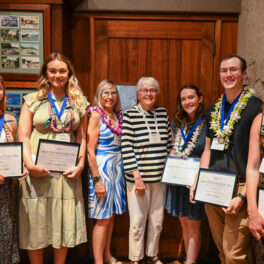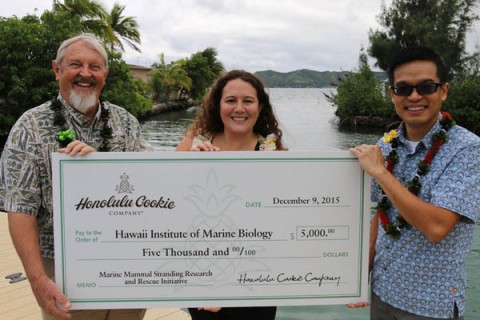Bin Chen, assistant researcher in the University of Hawaiʻi at Mānoa School of Ocean and Earth Science and Technology, has received the National Science Foundation’s Faculty Early Career Development (CAREER) Award. As the most prestigious award for junior faculty from NSF, it is bestowed on teacher-scholars performing outstanding research and classroom education at the university level. Chen will be awarded $570,000 over a 5-year period for his project—Elasticity and Lattice Dynamics of Iron Alloys under Earth’s Core Conditions.
Residing at the center of the Earth, the core is the innermost and extremely dynamic region of our planet.
“Understanding the nature and dynamics of the core can deeply enhance our abilities in understanding the magnetic field generation process, the thermo-chemical evolution of the Earth’s deep interior, and the formation of the Earth as a habitable planet,” said Chen.
With this award, Chen will systematically measure properties of various iron alloys under extremely high temperatures and pressures nearly one million times greater than at the surface of the Earth, using a high-pressure device called diamond anvil cell and high-brilliance X-rays at synchrotron facilities. This will provide a new set of fundamental data on density, sound velocities and crystal properties of iron alloys under previously uncharted pressure-temperature regimes. This information is essential to further constraint the core’s composition and dynamics including how seismic (earthquake) waves travel through Earth’s deepest interior.
The involvement of student researchers will initiate the ‘pipeline’ that helps influence and attract a diverse student population, particularly traditionally underrepresented minorities, into Earth science and build diverse geoscience workforce.
This CAREER award will provide support for graduate and undergraduate student researchers to engage in high-pressure mineral physics research employing the state-of-the-art experimental techniques at departmental, university and national laboratories. For the education and outreach part of the project, Chen is building an inquiry-based Multi-Anvil Press Laboratory (MAPLab) teaching module for higher education and outreach to K–12 students and general public.
Since joining UH Mānoa in January of 2014, Chen has received a total of $570K in funding as a leading principal investigator. His overall work focuses on understanding physics and chemistry of Earth and planetary interiors. Recently he has been working on the deep carbon cycle in the Earth’s interior with a focus on carbon in Earth’s core.
More about Bin Chen
He received is bachelor’s degree in geochemistry from University of Science and Technology of China in 2001; a master’s degree in isotope geochemistry from University of Science and Technology of China in 2004 and a PhD degree in geology from the University of Illinois at Urbana-Champaign in 2009.















